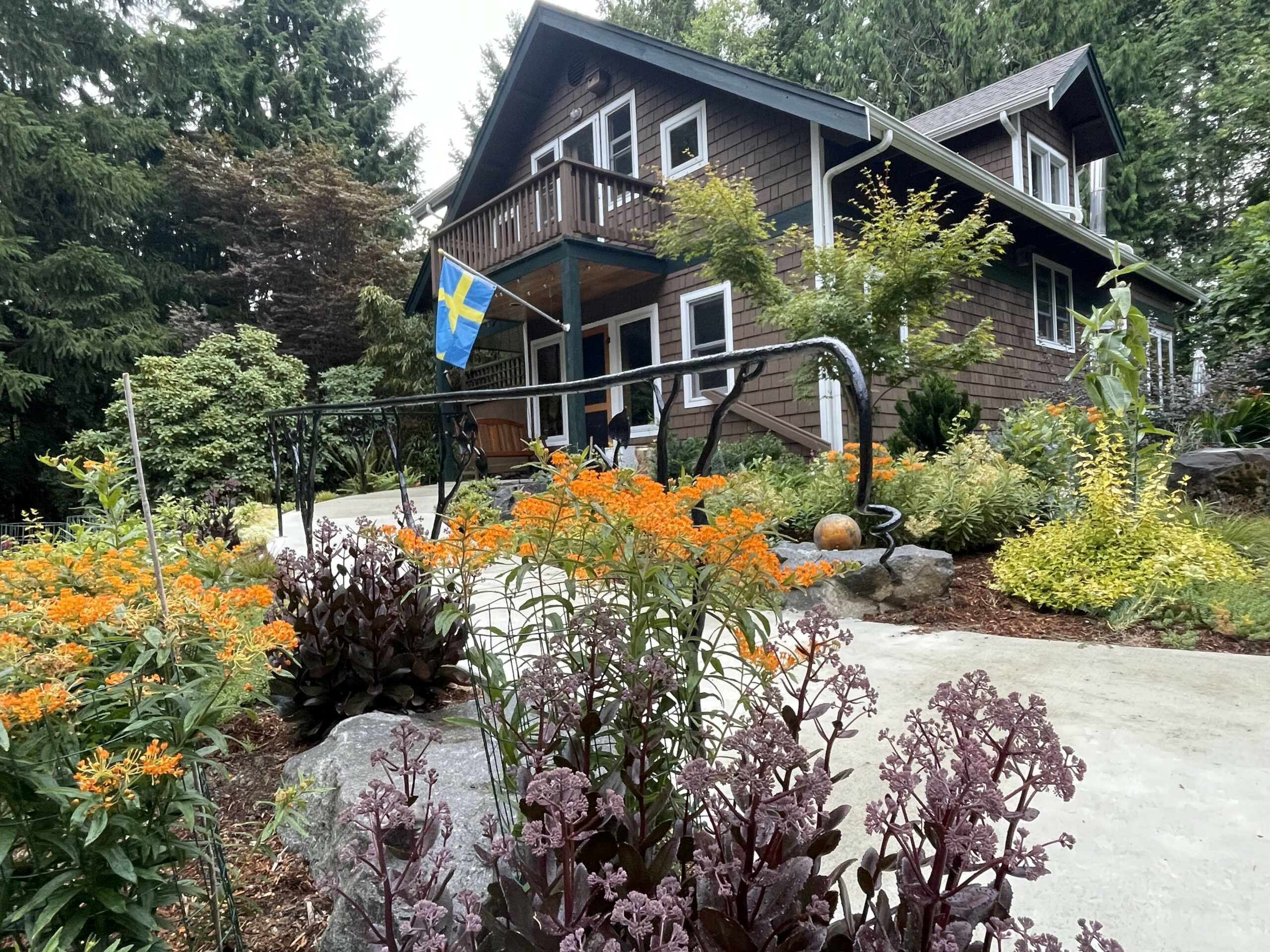Design
Business Member Profiles
Linda Andrews Landscape & Design
While sensitivity to artistic concepts like balance, form, line, and color is always important and a source of joy and satisfaction in garden design, it is just the beginning. I have always had environmental values at the forefront of my work, but if anything I am stepping up my goals for increasing the ecological benefits of each garden I design, and educating clients about the importance of their role in healing their little patch of earth. If we can pay attention to the little things like floral abundance and creating habitat for invertebrates, the benefits will ripple outward.




Specialty
Sustainable landscape design.
Region Served
Washington
In Their Own Words...
Member Spotlight
Inspiring Beautiful Gardens, Wildlife and Habitat Planting, Climate Resilience
What's the best gardening advice you ever received?
It is hard to pick just one thing. Thinking beyond flowers to bark, seeds, catkins, foliage, etc. helps in the creation of a garden that always has something to offer. Part of that is helping people see the beauties of plants outside of their blooming periods. This includes valuing dead wood in the garden, finding opportunities to keep snags, etc. It’s also great to just try things. Be playful. Garden to satisfy yourself, not some idea of what you are supposed to like.
Where do you find Inspiration?
I love to hike and paddle, and otherwise get immersed in wilder places. I pay close attention to the patterns I see in the natural world and try to echo them in my planting designs. I notice how plant communities develop and change as they go from deep woods to woodland edge and open savannah, to meadow, prairie, alpine scree, and near shore habitats. How do plants follow micro conditions that are moister or dryer? Which ones form large masses and which mingle in lovely tapestries? I am also inspired by other designers and plantspeople, especially those for whom the matter of whether or not something is pretty is just one question, coupled with complex environmental concerns. Certain public gardens have been touchstones, the foremost among them the Bellevue Botanical Garden.
What is something surprising about your history?
I was an obsessed gardener for about a decade before starting down this path. I got divorced and started my business in the same year. I figured I could do this thing that I had a passion for or play it safe, so why not try? I taught English to new immigrants and international students beforehand, which was also gratifying, but just couldn’t get plants and design off my mind. I did a garden for some close friends, then their neighbors, then their colleagues, and then it just took off. I am grateful to all the clients who’ve entrusted me with their spaces and everyone who has mentored me along the way. I adore the way this work combines art, science, and stewardship. I can think back to certain experiences where my nerve endings lit up, like very early on watching peony shoots emerge in the garden of my childhood or eating homegrown tomatoes, keying plants for the first time at Leadbetter Point as part of an environmental science course, getting into alpine meadows all over the cascades, with Pojar and MacKinnon in hand soaking up everything. Collaborations with great groups like the Native Plant Salvage Project in Olympia have been joyful and symbiotic.
What are you most proud of?
Some of my favorite feedback: “You really are a magician, Linda. This is the first time I have ever been excited about outside spaces or landscaping in my life”. “You were able to take my poor description of what I wanted and bring it into reality, only better than I ever thought possible”. “They should call you the non-judgmental landscape designer”. “Not only is my garden easy to take care of, it also looks great all year. There is always something happening”. “I’ve recorded 78 species of birds here. That does not include flyovers like cormorants. Most surprising was last year’s visit by and ovenbird!”
What educational resources do you share?
I taught “Naturescaping” classes for many years with Native Plant Salvage Project, WSU Cooperative Extension. I’ve also taught classes on no lawn and small lawn landscaping, and rain garden construction and design, among other topics. I encourage gardening with our summer dry climate in mind and right plant, right place. I connect clients to resources like The Garden Professors Blog, Great Plant Picks, Northwest Perennial Alliance, Plant Amnesty, and podcasts like Jennifer Jewel’s Cultivating Place, books like Planting in a Post-Wild World, The Doug Tallamy books, The Native Plant Primer by the folks at Humble Roots Nursery, Pacific Horticulture Magazine, and informative websites like those of Xerces Society, Xera Plants, Far Reaches, and Sound Native Plants, for example.
